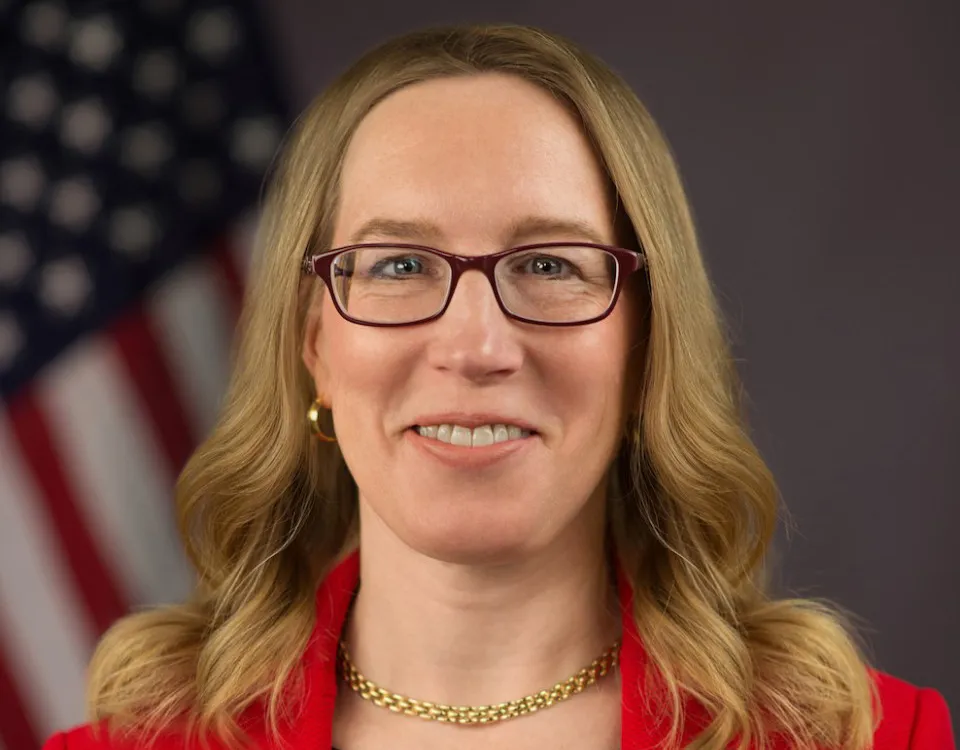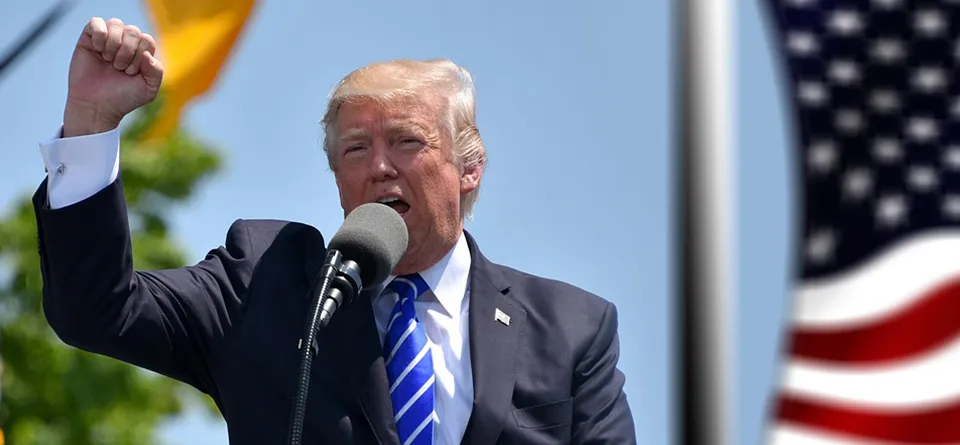Nowhere else in the world is the primary financial regulator so dominated by personality and politics. Despite all the checks and balances, the leadership of the Securities and Exchange Commission (SEC) has an inevitable impact on the direction and sentiment of institutional investment. For the past four years, that influence has been wielded by former chair Gary Gensler: known for his rigorous enforcement approach, his conservative crypto stance and his aggressive overhaul of micro market structure.
But with Donald Trump back in the White House, the incoming chairman looks set to have a very different stance. Paul Atkins’ pro-markets, pro-business nomination has been greeted with optimism by the Street. How will this translate into policy?
The fine print
The SEC consists of five commissioners, no more than three from the same party. After Gensler’s resignation on January 20, along with the surprise departure of Democrat Jaime Lizárraga in November, the agency stands two short. Congress is (as of February 5) yet to confirm Atkins’ nomination, while Democrat minority leader Chuck Schumer has reportedly put forward party heavyweight – and former presidential nominee – Elizabeth Warren to choose the Democrat candidate. Until then, the agency is running on a skeleton crew – acting chairman Mark Uyeda (Republican), commissioner Caroline A Crenshaw (Democrat) and Peirce (Republican).
The longest-serving commissioner on the board, and the newly appointed head of the recently established crypto task force, Peirce joined the SEC in 2018 under Trump’s first presidency and is perceived as one of SEC’s safest pairs of hands. She sat down with Euromoney head of capital markets Laurie McAughtry at the Equities Leaders Summit in Florida this week to discuss in detail the future direction of SEC policy.
The public pipeline
While ‘deregulation’ is the word on everyone’s lips, Peirce is cautious, highlighting the importance of context. “It’s more about looking at the rule book and seeing whether those rules are working as intended,” she says, noting how at times they are not solving the problems they were intended for.
A focus on improving capital markets is going to be core to this approach – and Atkins has already staked out his stance on this, noting on a recent podcast that the SEC is there to “enable markets to flourish … if it helps to bring down costs for investors and for people who are trying to raise capital. That’s the reason why we have financial markets … to have capital find its way to businesses.”
I want people to come in and work through the hard problems with us. I want the door to open a little wider
Hester Peirce, SEC
Peirce echoes this. “Capital formation has not received a lot of attention recently, and I suspect it will be an area people want to focus on,” she says. “Why do we have so few public companies now?”
While the US may not be facing the same challenges as Europe when it comes to primary liquidity, it has its own hurdles to listing that the SEC is keen to surmount.
“There are a lot of reasons why companies don’t go public, and some of those are SEC regulatory reasons,” admits Peirce. “I do think there are other reasons – the private markets are very good at what they do, and they’re flush with capital. But we need to explore this area more and see if we can give people a better pathway into regulatory compliance – particularly so that smaller, newer companies don’t have to just turn a switch and comply with everything straight away.
An equities reshuffle?
That might fix the primary markets, but intricacies of secondary market liquidity remain. The previous chairman had his own programme of market reforms, not all of which were popular – could these be rolled back under the new regime?
This is not Atkins’ first rodeo – he was previously chairman of the SEC from 2002 to 2008 under George W Bush, during the time that Regulation National Market System (Reg NMS) – the seminal 2005 SEC framework governing trading, quotations, and transaction reporting of stocks in the US – was adopted.
“He was not a fan of the order protection rule,” reveals Peirce. “Will we look at that now and do something about it? That’s one possibility.” The best execution rule and the mandatory auction rule were also controversial and they, too, could be on the agenda for a rethink – if the industry asks for it.
The Commission is assessing how to give exchanges more flexibility, so that they can cater to different types of companies, according to Peirce. “I do hope that exchanges will think about coming to us if they have ideas, and I’m certainly open to working with them on those issues,” she says.
Regulatory fatigue
One of the biggest changes at the SEC will be a more enthusiastic approach to communication. “I think that is one area where we haven’t been doing as good a job in recent years, because the Commission has been so busy with all kinds of rule-making projects that there really hasn’t been time to engage with individual market participants to explore how we can solve things within the existing rule set. I want people to come in and work through the hard problems with us. I want the door to open a little wider.”
ESG could be an area of real difficulty
Hester Peirce
The intense regulatory focus in Gensler’s SEC has left its mark. “There were a lot of rule proposals and a lot of requests for engagement on very complicated rule makings,” the commissioner says. “Then a number of those rules did get adopted and the implementation of those is very challenging. I think there is a genuine tiredness in the market, and a real desire for change.”
Writing rules first
Part of that change is likely to be a shift from the enforcement-based approach that the SEC has adopted in recent years. “The goal is to use enforcement as a tool when it’s appropriate to use,” says Peirce. “We have instead tried to use enforcement to write policy, and it’s just not a good tool for that. It’s extremely expensive for us and for the firms on the other side, and it takes a ton of our staff time.”
Writing policy based on individual cases being litigating, which may go through settlements or receive disparate court opinions, is difficult and suboptimal. “Why not just write the rules first and enforce them subsequently?” asks Peirce. “That’s the direction we want to move in.”
International cooperation
When it comes to SEC’s approach to international regulatory harmonisation, there is inevitable concern amongst other regulators about potential US isolationism. Will the US pursue a similar path to its 2024 T+1 implementation, going it alone and expecting other countries to catch up?
“I talked to the Europeans a lot about T+1, because I wanted to make sure we were there during implementation to provide whatever guidance we could, and I think there have been fewer problems than we anticipated,” says Peirce. “Adjustments were made, and now the EU and UK are planning to follow suit, and although people did have to work very hard to get there, I think that’s a good outcome.
“Chair Atkins has always paid a lot of attention to international and transatlantic work, and when I was working with him before he always made a real effort to engage with Europe and the UK. I imagine that will continue, as it’s something we think is very important.”
ESG (dis)engagement
But it won’t all be plain sailing, and there are areas in which the US and EU won’t align easily – such as ESG and sustainability. “I think that could be an area of real difficulty,” Peirce warns. “It means something different in Europe than it does here. There are now some attempts to export those regulations over here and impose on US companies, and that’s going to become very expensive.”
Instead, she urges a “return to materiality” as a touchstone for corporate disclosures. “If climate is a material risk, then a company needs to talk to its shareholders about that,” Peirce says, while adding that she does not see US corporate disclosures adopting the concept of “double materiality”, which include the impact of a company on the environment or society.
I want to use that authority to help people experiment with this new [crypto] technology in the traditional financial world
Hester Peirce
That could mean a sea-change for the SEC when it comes to sustainability, as banks and asset managers pull back from previous commitments. BlackRock left the Net Zero Asset Managers (NZAM) initiative last month, citing “confusion regarding BlackRock’s practices and … legal inquiries from various public officials”, while the US’s six biggest banks – JPMorgan, Goldman Sachs, Wells Fargo, Citi, Bank of America and Morgan Stanley – have recently departed the Net-Zero Banking Alliance (NZBA).
Peirce argues the move is prompted by a need for realignment, saying: “I think it’s time for us to rethink what fiduciary duty means in this context, and that’s a healthy exercise. It doesn’t mean there aren’t going to be ESG funds in the US, as long as there is a market for them. But as a regulator, we need to make sure that asset managers are adhering to their clients’ vision.”
No safety net for private credit
Private credit is another area that could come under increased SEC scrutiny – and unlike banking, there is no built-in backstop.
“There are a lot of players in that space now that are not banks,” says Peirce. “It’s good, in the sense that you’re moving assets off bank balance sheets and into entities that don’t have a government safety net. If they don’t do a good job, they can fail and go away, and we will hold to that. I think a more diversified loans landscape is positive, but a lot of the holders of these are the funds we regulate, so many of these market participants will fall under our purview.”
Peirce is not against private credit – if anything, the opposite. In an October speech, she cited it as an “efficient, effective and economically useful form of finance” that we should not build up into a “monster of our own imagination”. However, that does not mean the SEC will step in to support lenders who fail.
Cracking crypto open
Peirce’s big job for 2025, of course, is leading the newly established SEC crypto task force. Compared with Gensler’s heavily restrictive approach to digital assets, Trump and Atkins’ pro-crypto stance is expected to usher in a new dawn for crypto regulation.
Nicknamed “Crypto Mom” by the US media for her well-documented dissent against SEC enforcement on crypto firms, Peirce will oversee a “comprehensive and clear” new framework for crypto assets. So, what’s the plan?
“If it’s within our purview, then there are certainly adjustments that we can make, and Congress has given us the tools to do that – we have a lot of exemptive authority. I want to use that authority to help people experiment with this new technology in the traditional financial world.”
My goal is to get people the information they need so that they can make the right assessments. That’s our job
Hester Peirce
For Peirce, that means determining whether an asset is a security, providing guidance, and talking with the public, inviting further disclosure. “At the same time, we want to get to a place where it’s easier to distinguish the bad actors, of which there are a few, from the good actors, of which there are many,” she says.
There are some key milestones that Peirce is working towards, including the creation of a special purpose broker-dealer model for digital assets that “actually works”, and a new approach to registration for crypto assets. A core part of this approach will be more “meaningful cooperation” with fellow regulators, including the Commodity Futures Trading Commission (CFTC) – something that Peirce admits has not been done so far.
“My end-goal is never to tell the markets what they should and shouldn’t embrace,” she says. “It’s to open the doors so that if people want to embrace it, they can. But I do think that we will start seeing this technology being increasingly applied in the traditional financial space. Some of those experiments have been happening in Asia, in Switzerland, in the UK, but I’d like the opportunity to have those occur here in the US.”
Another area of interest is to encourage cross-border experimentation, working with financial institutions across multiple countries.
2025 to-do list
At the top of the US regulatory agenda for 2025 is capital formation, crypto’s new dawn and focusing on one-way materiality. But Peirce hasn’t forgotten some “bread and butter” items that may look less exciting.
This could include transfer agent rule-making, a closer look at the growing options market – “it would be good to have that conversation soon,” she says – and a further exploration of the fixed income markets to assess potential regulatory fixes.
At the end of the day, Peirce argues, markets speak for themselves, adding: “People need to remember the things that have gotten us in trouble in the past and be sure we’re not repeating them. I want people to be sceptical and to really think about what they’re doing – and that applies whether you’re an individual investor or an institution.
“My goal is to get people the information they need so that they can make the right assessments. That’s our job. Let the markets decide the rest for themselves.”
The views expressed in this interview are those of commissioner Hester Peirce, and do not necessarily represent the position of the SEC or the incoming chairman.




